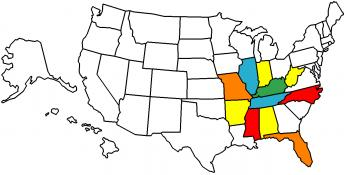Anyways, to the real questions.
I have read a lot of previous post and I believe I have an air leak, mainly do to sporadic RPM's on idle. I got my Clymer manual and was hoping it would tell me what the boots are so that I wouldn't have to ask, but it didn't. So, what are the boots that I'm supposed to check to see if they are leaking? I see rubber connecting the carbs to the engine and rubber connecting the carbs to the airbox, is it one of these sets?
Second, I am leaking gas from at least the first and fourth carbs. It is a very slight leak, but I am not able to tell where it is leaking from. I just know that I wipe off the gas, then I come back after it's been parked for a while and there is gas again. Where/How do I start to figure out where this is coming from?
Third, I am just curious as to what my RPM's should be when driving. I am used to dirtbikes, but not something the size of a 750. That being said, when I am going 45 MPH, I am in fifth gear at about 3400 RPM. Is that high? It seems to me like a 750 should be able to handle that with a lot lower RPM, however, I'm new to street bikes and could be completely wrong.
I probably have 40 more questions, but that's my big ones right now. I thank you ahead of time for the help. If anyone lives near the Neenah, WI (Green Bay, Appleton, OshKosh) area, let me know and I'll recruit you for some beer or soda (whichever you prefer).



Comment